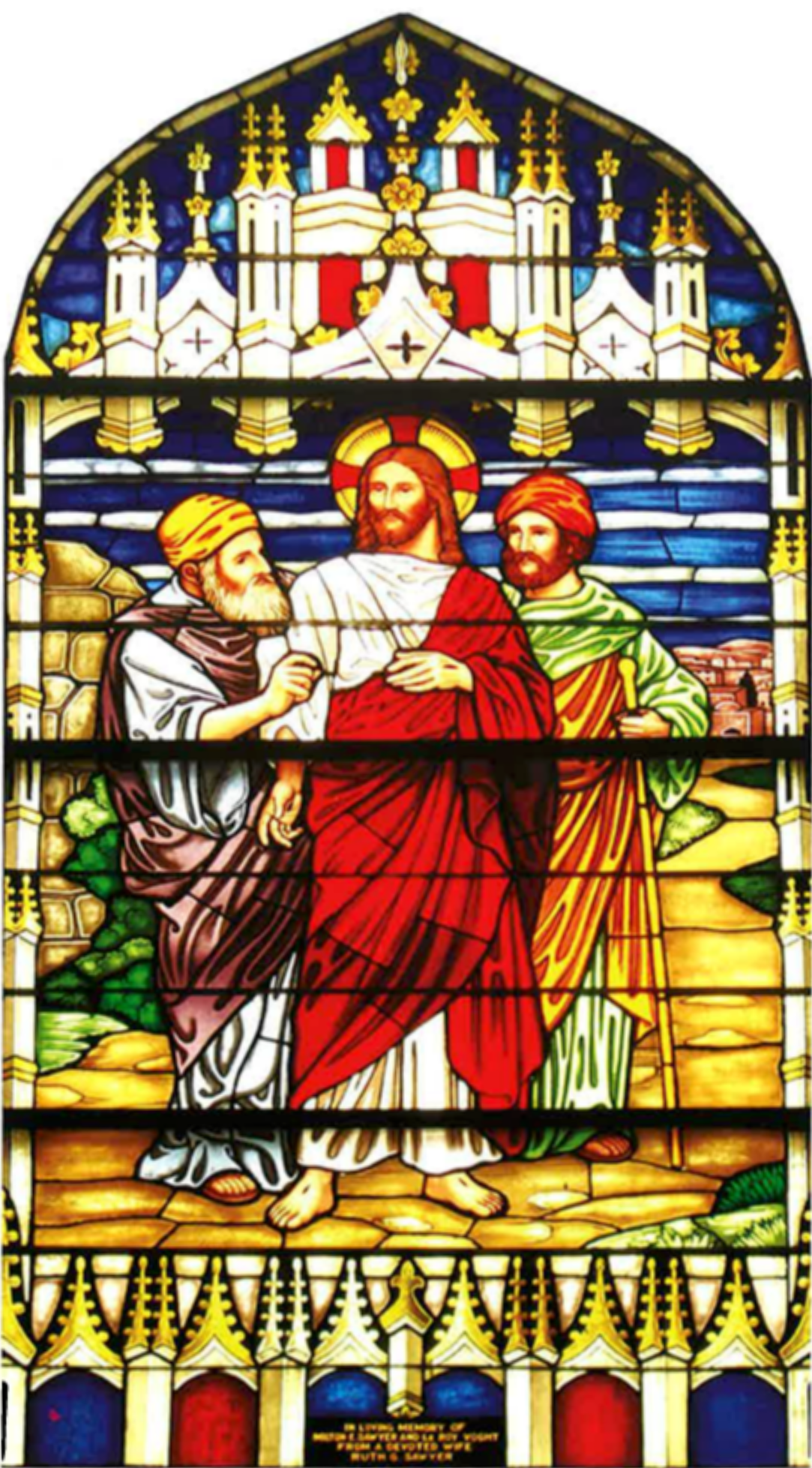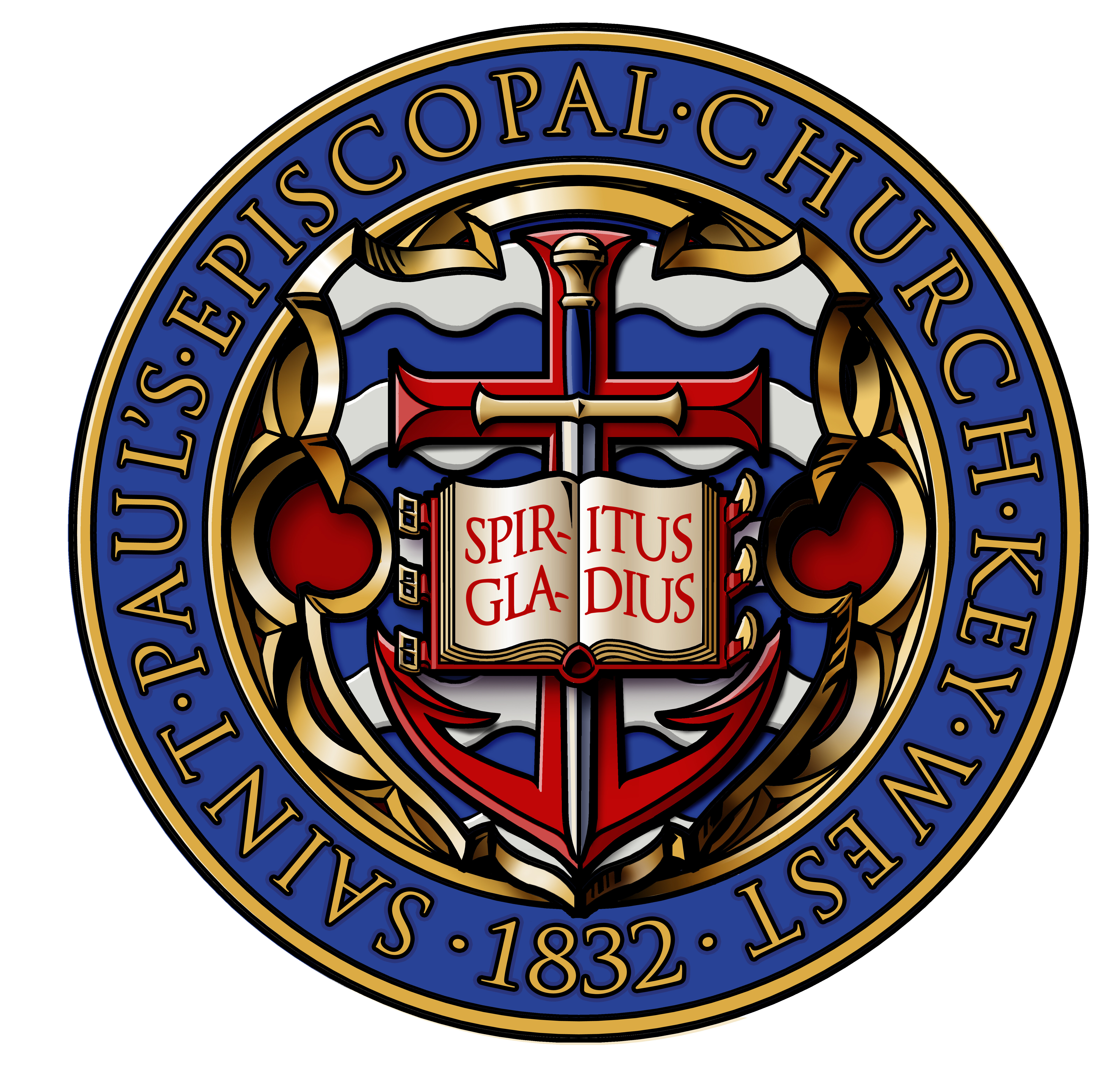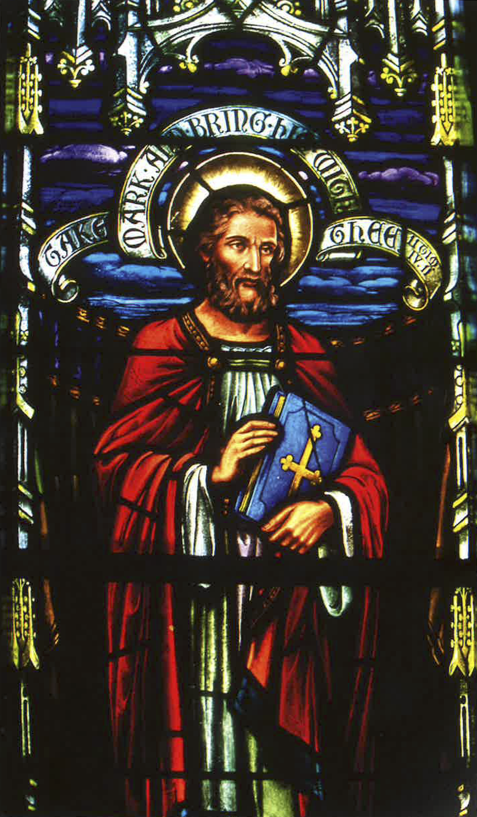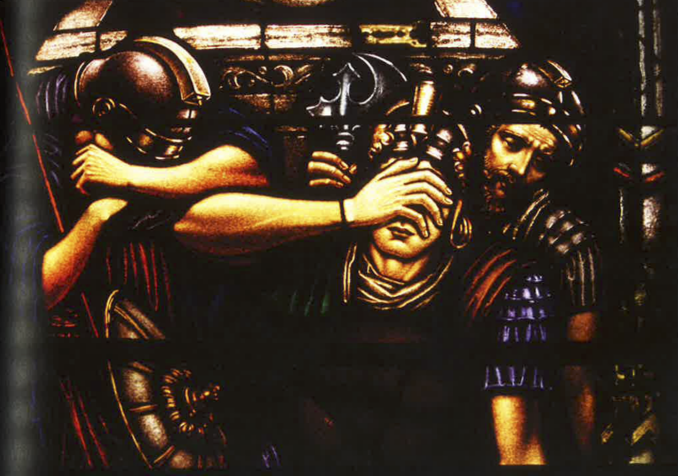
Christ with the Elders - Road to Emmaus
Harry Taylor - Mid 1970s (perhaps 1977)
In Loving Memory of Milton E. Sawyer and Le Roy Voght
From a Devoted Wife Ruth G. Sawyer
DESCRIPTION: There are many similarities between this window and Christ the Fisherman (Window #124), both by local stained glass artist, Harry Taylor. These windows are more contemporary ni style than the older windows in the church. Placed as companion clerestory windows on the west wall of the south and north transepts, the figures are set in a landscape background essential to the narrative. Both emit a warm golden light, sparked by vivid red and green, in contrast with the predominantly cooler tones found in many of the older windows. The top and bottom portion of both windows, as well as the borders, are identical. The placement and position of Christ are similar, as are the expressions on the faces of the men pictured in each window. The two stories they depict, however, are clearly told in the details that make them different.
Christ with the Elders - Road to Emmaus shows two men walking with Christ along a road of stone leading from a city, engaged in conversation. Christ's bright red robe stands out in vivid contrast to the surrounding golden hues. When the window was first installed, the nail marks in the hands and feet of Jesus were omitted. Father Potter, the rector, requested this detail be added. These are an important detail as the story takes place after Christ's Crucifixion and Resurrection.
THE STORY: As told in Luke 24:13-31, shortly after the Crucifixion and the Resurrection, two of Jesus' disciples were going to the village of Emmaus, a few miles from Jerusalem, discussing the all the strange events of the day. While they were walking and talking together, Jesus drew near and walked along with them. Jesus spoke to them, inquiring about the nature of their conversation and the reason for their sadness, but they did not recognize Him. It was only later, when they stopped in Emmaus and He took the bread, blessed and broke it, did they realize the identity of their traveling companion: "And their eyes were opened, and they knew him; and he vanished from sight." (Luke 24:31)
MEMORIAL: Ruth Gandolph, the donor of the window, was first married to Le Roy Voght, a barber. Sometime after his death she married Milton E. Sawyer, a widower. Milton was Assistant Postmaster and a devoted churchman, serving on the vestry of St. Paul's. By his former marriage he had two sons, Eugene and Jackson.
Ruth Sawyer chose the theme of this narrative window because Milton, her second husband, often spoke of Christ appearing to two wayfarers. For a time this window was called Wayfarers Window.
Source: The Golden Cockerel: The Art, Symbolism & History of the Stained Glass Windows, St. Paul's Episcopal Church, Key West, Florida by Winifred Shine Fryzel.
Please consider making a donation to St. Paul's so that we may continue our work, including the stewardship of our beautiful grounds, buildings, and windows.



Login To Leave Comment